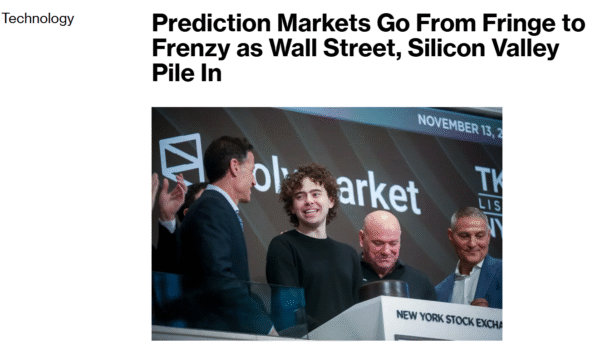This is a segment from The Breakdown newsletter. To read full editions, subscribe.
We are hardwired to see patterns in noise — a stick in the grass that looks like a poisonous snake, or a rustle in the bushes that looks like a saber-toothed tiger getting ready to pounce.
With a moment’s reflection, we can usually recognize we’re almost certainly not in danger. But why risk it?
When faced with ambiguity, our brains have been fine-tuned to succumb to Type I errors (false positives) due to the high evolutionary cost of making a Type II error (false negatives).
In other words, it’s better to mistake a stick for a snake than a snake for a stick.
Those prone to the latter — the Type II error of failing to recognize mortal danger — are soon removed from the gene pool.
The Darwinian result is that we’re all descended from people who were quick to make the (occasionally life-saving) Type I error of jumping to false-positive conclusions.
Michael Shermer calls this “patternicity”: the human tendency to find meaningful patterns in meaningless noise.
“Our brains are belief engines,” he explains — “evolved pattern-recognition machines that connect the dots and create meaning out of the patterns that we think we see in nature.”
Traders and investors are the world champions of patternicity.
Confronted with the cacophonous noise of financial markets, we try to impose order on chaos by drawing lines on charts and searching for reassuringly familiar patterns.
When we perceive a “cup and handle” pattern in the price history of a stock, for example, we’re using the same part of our brain that perceives the shape of a rabbit in a cloud.
But the cup-and-handle is formed by charting prices over time, which seems more quantitatively scientific than a billowy pattern of vapor in the sky.
James Gleick refers to this as “periodicity.”
“Why do investors insist on the existence of cycles in gold and silver prices?” he asks in Chaos. “Because periodicity is the most complicated orderly behavior they can imagine.”
Investors, being the descendants of Type I thinkers, impose neat, repeating cycles on chaotic price data because that’s the most complexity our pattern-hungry brains can process.
“When they see a complicated pattern of prices,” Gleick adds, “they look for some periodicity wrapped in a little random noise.”
Investors and traders may be particularly prone to this evolutionary foible because even the best of them have a hit rate close to 50%.
That makes their performance close enough to random — and randomness tends to beget superstition.
Shermer, for example, notes that baseball players are much more superstitious about their hitting than they are about their fielding because the lower success rate in hitting makes it feel more random.
Traders don’t do anything as obviously superstitious as donning a lucky shirt like they would when they sit down to watch their favorite team play football or baseball.
But that’s because drawing lines on charts and picking patterns out of the noise makes us think we have more agency in making or losing money than we actually do.
Worse than superstition, this is superstition dressed up as science — not just seeing patterns in the stars, but believing the patterns have some meaning.
The “science” of technical analysis is really just astrology for traders.
Shermer calls this “agenticity”: the tendency to infuse patterns with meaning, intention, or agency — or the belief that ghosts, demons, aliens, and government conspiracists haunt our world and control our lives.
Stock market traders, for example, commonly believe it’s the Federal Reserve that controls prices on the way up (and sometimes a cabal of hedge funds that control themes on the way down).
But of all traders, crypto traders are the best of the best at both patternicity and agenticity — because what else is there to go on?
With little or no intrinsic value to ground their decisions, crypto traders are forced to impose imaginary patterns on pure price noise just to have a reason to act.
The original imaginary pattern was the four-year cycle — the idea that bitcoin (and therefore all of crypto) should rally for about 18 months after each of its four-year halvings.
That perceived periodicity is now breaking down, however, with bitcoin falling below $90,000 when the pattern says it should be making new highs above $150,000.
This idea was particularly unscientific, as it’s based on a sample size of just three previous halvings.
Still, there are presumably some tradeable patterns in finance — otherwise Cliff Asness wouldn’t be a billionaire.
The persistent success of quantitative traders like Asness in finding tradeable price patterns suggests that markets are not perfectly random.
Some might even argue that patternicity is itself a pattern in the noise of human behavior.
In financial markets especially, it might be that human behavior creates the patterns that humans are always looking for.
But even so, the thing to know about markets is this: Any pattern of prices that’s visible to the naked eye will soon stop being a pattern.
In crypto, the four-year cycle lasted longer than most before being exposed as a Type I error of overzealous pattern-matching — which made it a profitably tradeable pattern for a while.
But with bitcoin at $89,000, it’s time to start looking for the next one.
Get the news in your inbox. Explore Blockworks newsletters:
Source: https://blockworks.co/news/astrology-for-traders


